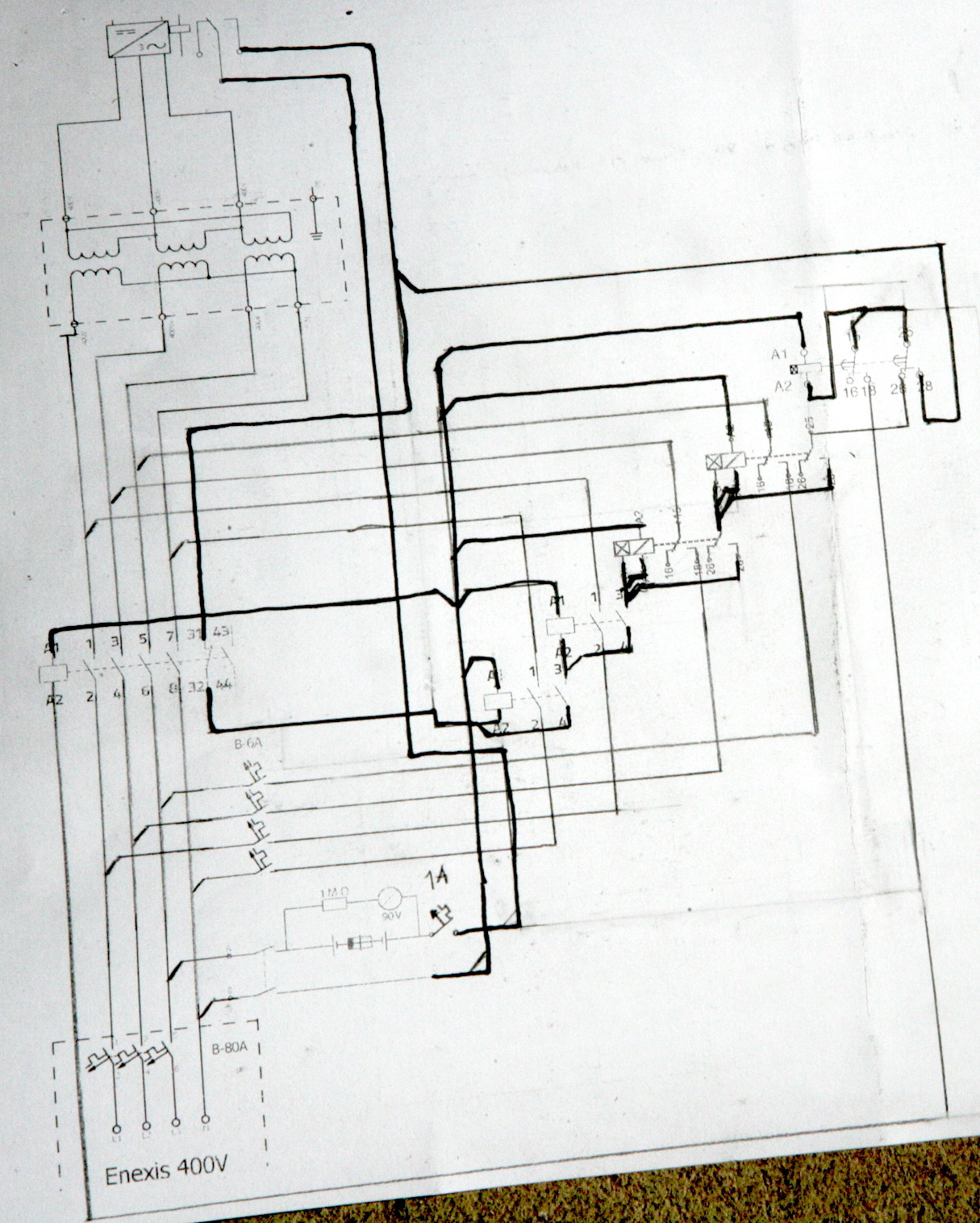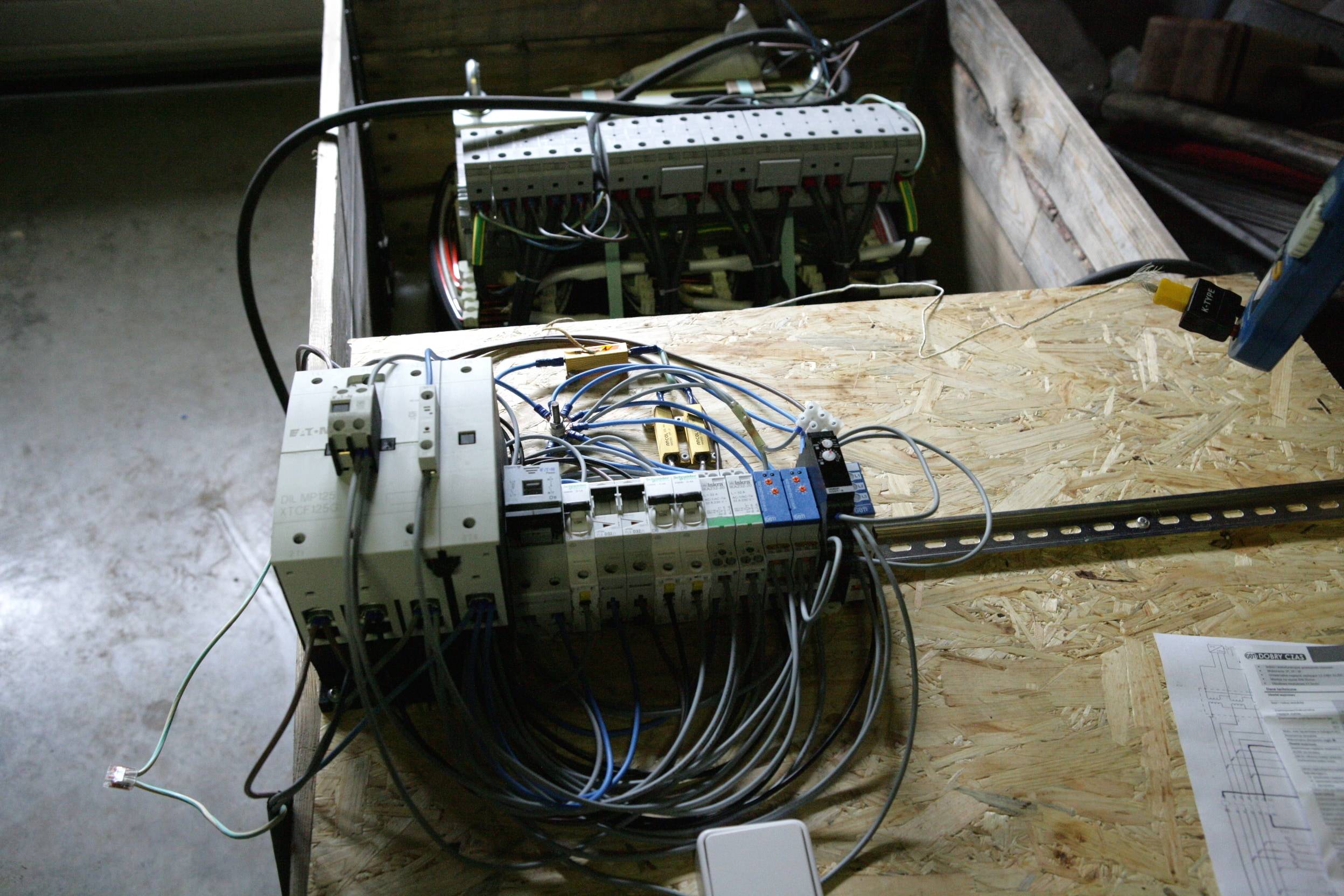#Sequential phase energization with resistor in neutral supply
https://ieeexplore.ieee.org/document/1413337 a.k.a.
http://www.ece.ualberta.ca/~apic/papers/Power_Quality/PQ-InrushReductionP1.pdf
From my own hands on experience with a 80 kVA 400 VAC 50 Hz transformer with a specified 1216 Amps of maximum inrush current, I can tell that switching on phases L1-L2-L3 sequentially with a resistor in the neutral line works better then expected. 2 relays, 3 timer relays and 1 resistor was all I needed beside the contactor already in place. The contactor is there to short-circuit the bypass resistor.
###Timing of sequential phase delay
Somewhere between 0.015 and 0.5 seconds is a good delay for L2 and L3 at 50 herz.
By trial and resistive inrush current measurements at 100 ksamples per second, I can measure less frequent high peaks at longer times, though high inrush current peaks do still occur. Because the MTR17-TAB-U240-208 timer is rated at 8 amps and magnetic circuit breakers in D-8A are expensive to source, a lower value D-6A breaker was used. Even with 0.55 seconds delay the L3 breaker tripped once where L1 and L2 inrush measurements were at 99 amps.
L2+L3 delay [s] L1 peak [A] L2 peak [A] #tests
--------------- ----------- ----------- ------
0.015...0.025 83 41 33
0.1 56 56 459
0.25 26 41 19
0.5 50 62 59
0.55 99 99 205
--------------- ----------- ----------- ------
For improved uptime I'd rather accept 99 amp peaks over 45 amps, when the circuit can be protected with 32A breakers instead of 6A breakers. Therefore I chose to replace 100 ms delays of the MTR17-TAB-U240-208 with 15...25 millisecond make delays of the IKA232-...
Note: 0.6 seconds was used as contactor delay.
###Ohmic value grounding resistor In our case the primary side no load phase average measured around 2.2 Amps. Optimal neutral line resistance was calculated according to part II to be 8.97 Ohms:
U ≈ 235 volts
I_no-load_phase_average ≈ 2.21 amps
P_no-load_loss ≈ 186.48 watts
Z_open = U/I_no-load_phase_average ≈ 106.33 ohms
R_open = P_loss / (3 · I_no-load² ) ≈ 12.727 ohms
X_no-load = SQRT(11307.1-162) ≈ 105.57 ohms
R_N_optimal ≈ 0.085 · X_no-load ≈ 8.97 ohms
###Include or exclude neutral to ground resistance? No clue whether that resistor value should include or exclude the line to ground resistance of the earth rod. Although my measurements suggests the calculated resistance value includes the full circuit including star point earth rod resistance. With 8.5 Ohms inserted in the circuit the maximum inrush phase current was measured at 99 Amps and a D-6A breaker tripped (once during 60 test runs). Lowering the resistance to 4.5 Ohms reduced the peak values and didn't trip the D-6A breaker during 697 test runs. Lowering to 3.644 Ohms seems to slightly increase inrush L2-L3 current peak values.
Resistance [Ω] L1 peak [A] L2 peak [A] #tests
-------------- ----------- ----------- ------
3.644 56 62 138
4.0 47 50 71
4.5 45 49 118
5.0 42 48 87
6.0 37 47 98
7.061 31 42 21
8.0 47 31 121
8.5 99 99 60
-------------- ----------- ----------- ------
Note: I didn't measure neutral to earth circuit resistance, though suspect 5 Ohms of resistance in the earthing rod at the utility company transformer according to that company its public documents for contracts, which states "...stop adding earth rods as soon as the resistance is lower then 5 Ohms".
###Schematic
Energy saving: powers down (timer)relays N-L1-L2-L3 after enabling the contactor using 3th timer relay and auxiliary NC on the contactor. Start is issued by making an external relay. In this case the relay of a solar DC to AC inverter.


